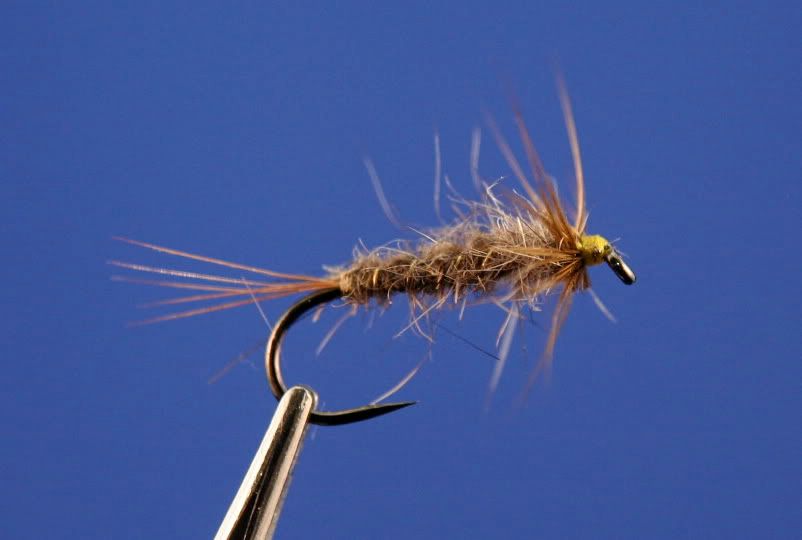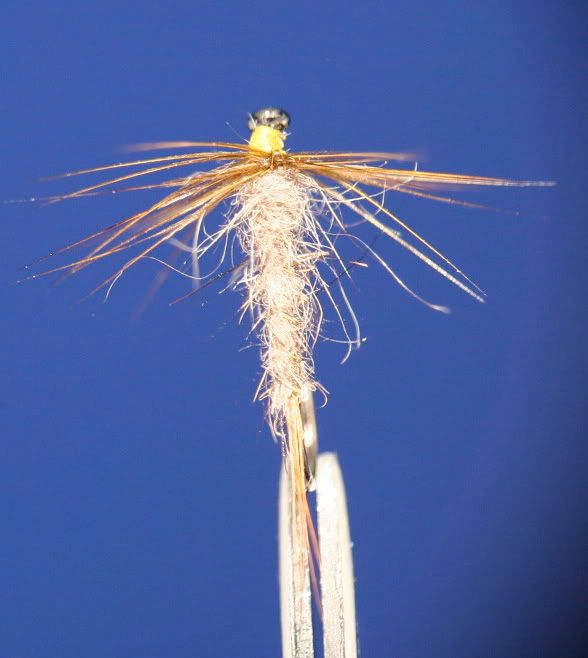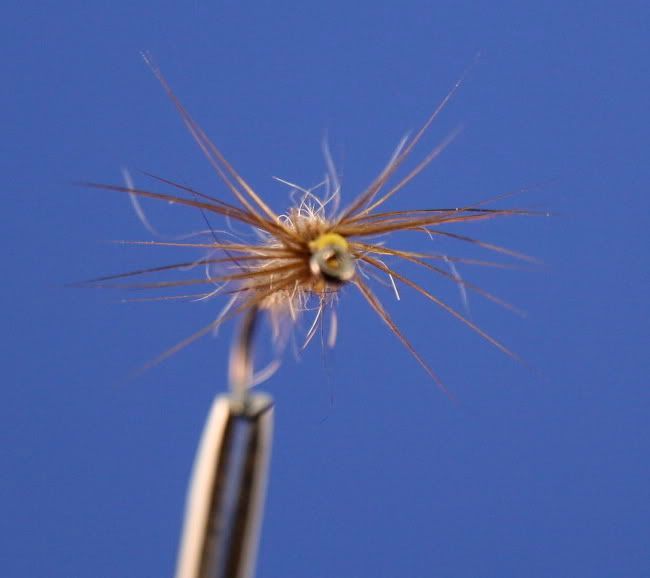Some time ago, while researching Skues I started wondering whether there was any similar nymph development going on in the north of England. Further searching turned up a little book title 'The Book of the Rough Stream Nymph' by W.H. Lawrie.
William H Lawrie published quite a few books and another of interest is 'International Trout Flies'. Lawrie was a Scottish Angler who had fished for game fish since boyhood. He was widely travelled and is the inventor of the BRA nigh fly series
The book of Rough Stream Nymphs was published in 1947 and is claimed to rank as the first book on trout fishing to reduce to a scientific system the use of nymphal representations in rough rivers. Here is his technique for dressing his nymphs:
"The first step is to wax thoroughly the tying silk..........Then, taking the hook between the thumb and forefinger.....Beginning a little way from the eye of the hook, three or four turns of tying silk are wound over the end of tying silk along the shank in the direction of the bend of the hook, after which the surplus waste end os the tying silk may be cut off....{but I want to get to the interesting stuff}...a small length of ribbing wire and three whisks are caught in and secured by a further three turns of the silk. At this point the fur from the hare's ear is spun lightly onto the waxed tying silk in such a way that there is a decided taper to the whole when it is wound on to the hook shank. This done, the dubbed silk is wound evenly back up the point where the hackle is secured...a tapered wisp of undyed blkue cat's fur is taken and laid upper side... care being taken to see that it is neatly applied, and the gold ribbing is firmly and neatly wound on to secure the entire body dressing...The dyed cat's fur, which is to represent the opaque thoracic parts of the nymph is then spun fairly thickly to the waxed thread and then the dubbed silk wound on for two or three turns...The hackle is then gripped by the hackle pliers and one or two turns are put on...The hackle may be trimmed so as to leave on fibres on the side."
The fly below is his pattern for an Olive Nymph. The three photos should show the cat's fur on top, a top view and a front on view:



Dressing for No2.:
Hook: No 14
Hackle: Dark blue hen hackle dyed a deep olive shade
Body: Dark hare-luh spun on primrose tying silk and backed with a tapered wisp of blue cat's fur, the whole ribbed with fine gold wire
Whisks: Three fibres soft rust hen feather (mine has a few more)
Thorax: Dark blue cat's fur spun on to tying silk below hackle.
Now I can tell you, my cat took a bit of catching.
Lawrie gives 14 dressing in his book. Of these all but 4 include cat's fur. One can only imagine what his cat looked like.
I hope you enjoy the story. By the way, the book is very good also.
